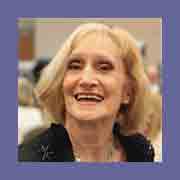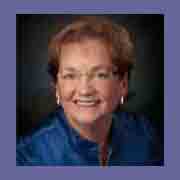While the crowds ran after Jesus, almost from the beginning the Pharisees and teachers of the law (sometimes called scribes) opposed Him. Why?
Teachers of the law were essentially rabbis—experts in the Old Testament law who taught in the temple in Jerusalem and in local synagogues.
Pharisees, on the other hand, were people who held a particular belief. We might call them fundamentalists today, people who were very concerned with rigidly following the moral laws and applying moral standards to others.
Some teachers of the law were Pharisees, but others were more liberal in their interpretations, such as the Sadducees. As it is today, the liberals were more often found among the wealthy and powerful people.
But the teachers of the law, both liberal and fundamentalist, had this in common—most of them opposed Jesus. This fact, alone, should give us pause in pursuing our current theological debates. While we can rightly see that our opponents are wrong, that does not automatically mean that we are right. We should consider carefully where we, too, might be out of step with Jesus.
The first we see of the teachers of the law in Mark is in 1:22, where the teaching of the teachers of the law is unfavorably contrasted with the authority with which Jesus taught. It is not stated that the teachers themselves heard this criticism, but it is likely, and they may have noticed the contrast themselves. If so, it means that the teachers’ antagonism might spring not from theological issues but from jealousy.
When Jesus began healing, He told those healed to recognize the authority of the priests (Mark 1:43-44), but the priests were not the teachers.
When the teachers next encountered Jesus (they seem to have stayed in the cities and towns and not gone out into the countryside to hear Jesus), they thought Him guilty of blasphemy because He forgave sins (Mark 2:6-7). This would have been blasphemy if Jesus was not God, but Jesus then demonstrated His divinity by healing (Mark 2:8-12).
Some Pharisees who were also teachers of the law next criticized Jesus for eating with tax collectors and known sinners (Mark 2:15-16). When the Pharisees asked Jesus’ disciples why He was doing this, Jesus took time to explain his actions, saying that, just as a doctor spends time with the sick in order to heal them, so He had come to save those who were spiritually sick (Mark 2:17).
Some people then asked Jesus why the Pharisees and the disciples of John fasted but His disciples didn’t (Mark 2:18). The Pharisees may have had the same question. Jesus responded that it wasn’t the time for that yet, but that His followers would fast later (Mark 2:19-20). But Jesus also warned people against trying to fit Him into some previous system (Mark 2:21-22) since He was establishing a new Kingdom of God.
The Pharisees next criticized Jesus’ followers for breaking the sabbath law, not fundamentally but only on a technicality (Mark 2:23-24). The disciples were not working, just eating, snacking on some grain as they passed through a field. Jesus told them that the sabbath law was meant to help people, not bind them (Mark 2:25-26), and that He was God and He would decide the proper way to observe the laws governing the sabbath (Mark 2:27).
By this time, some of the Pharisees and teachers were already antagonistic to Jesus, looking for ways to criticize Him. They found an opportunity when Jesus healed (did work) on the sabbath (Mark 3:2). By this point, they had totally lost perspective. For them, a minor legal question overshadowed a miraculous healing and the presence of God. It is interesting that Jesus was both angry with them and grieved that they were rejecting God, pointing out that they were condemning themselves (Mark 3:5).
The Pharisees then started talking with the Herodians (not tax collectors who worked for the Roman government but largely secular people who wanted a secular and independent nation) about killing Jesus (Mark 3:6). After criticizing Jesus for eating with tax collectors, they made their own deal with questionable allies. It is interesting that the Pharisees had already made their minds up about Jesus, mostly on the basis of a few quibbles about minor provisions of the law. Through three more years of Jesus’ teaching and miracle-working, they seem never to have wavered from that first impression. In the end, the Pharisees and teachers of the law supported the deal made with the Romans (the people they criticized Jesus for befriending) to kill Jesus.































































